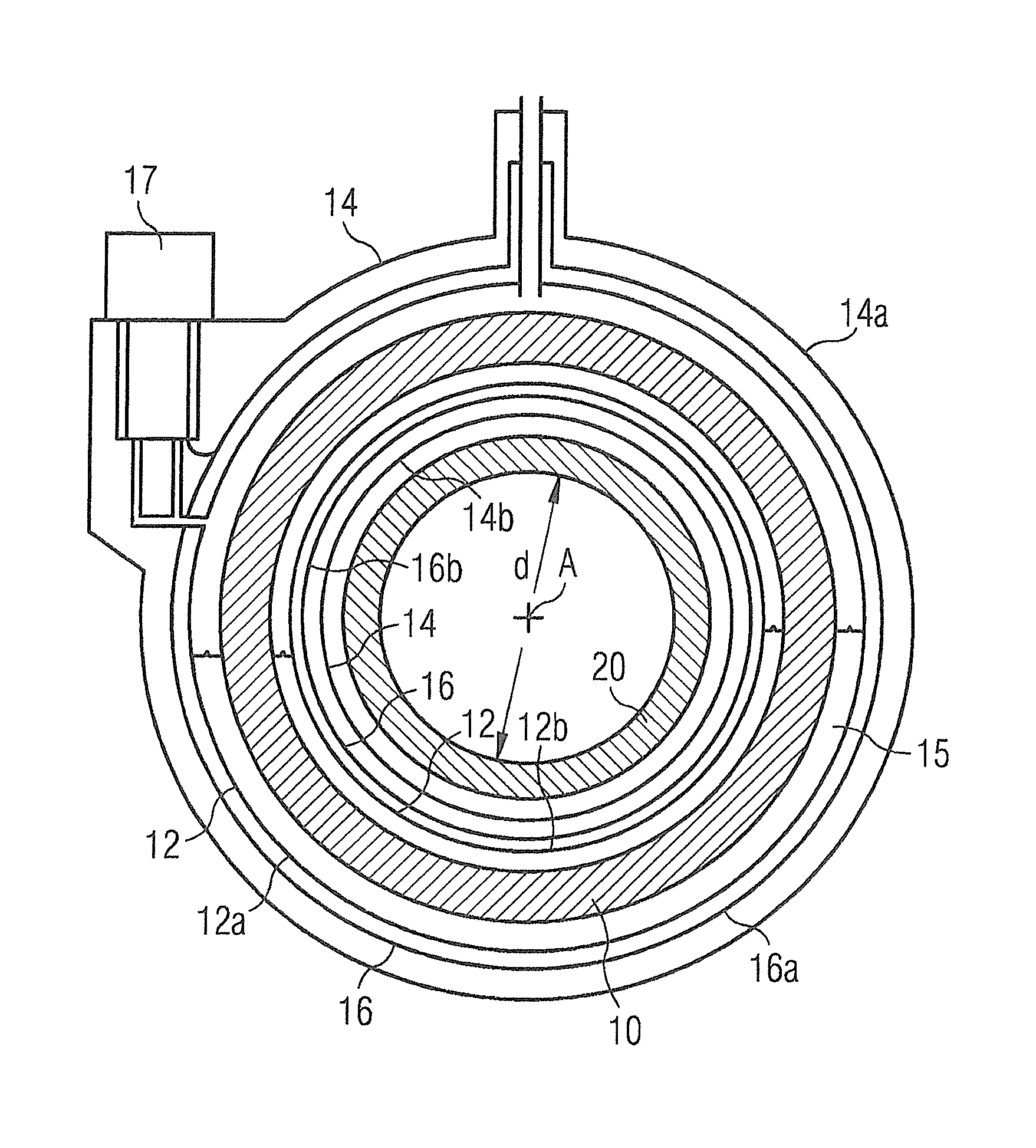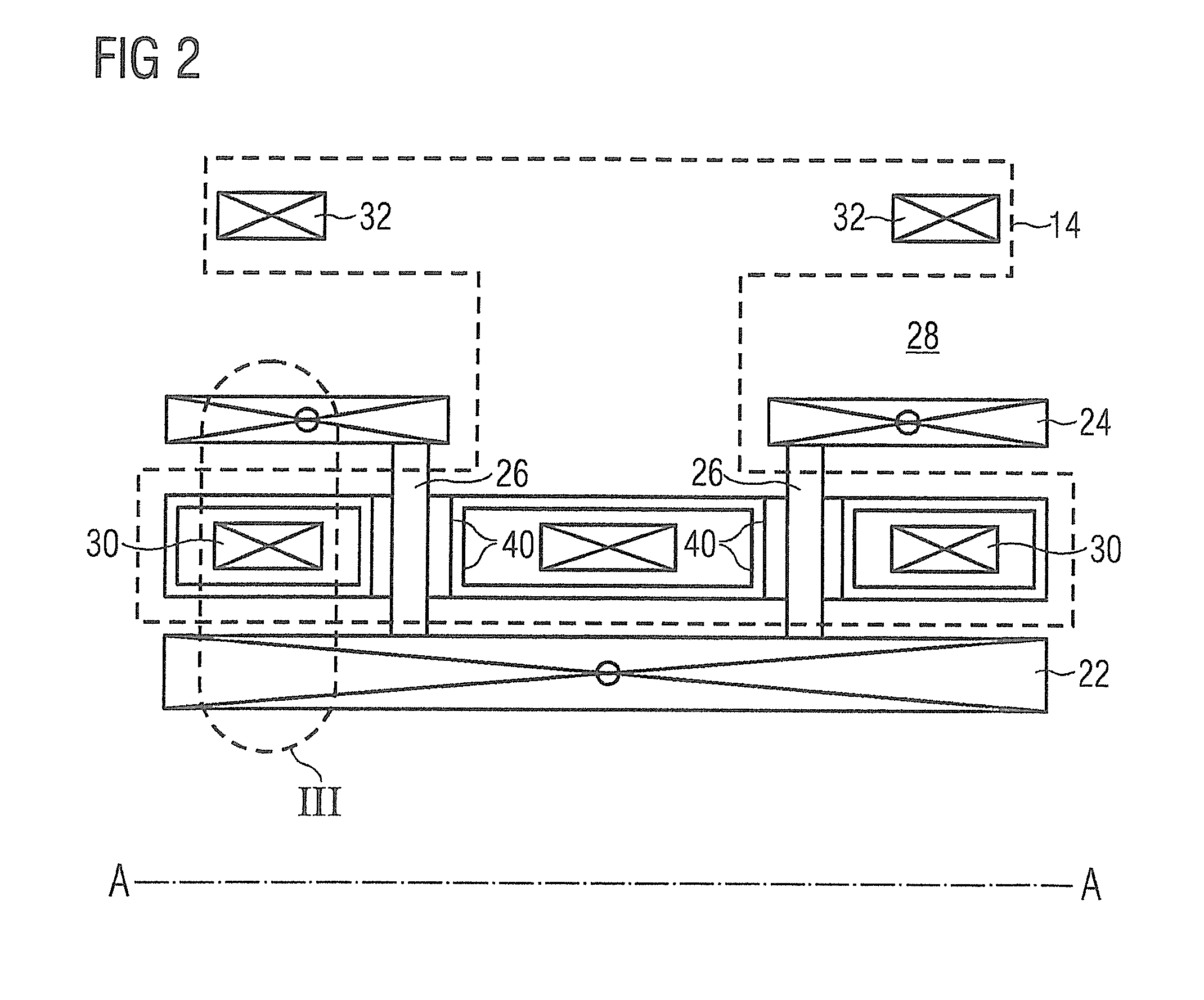Force-compensated gradient coil
- Summary
- Abstract
- Description
- Claims
- Application Information
AI Technical Summary
Benefits of technology
Problems solved by technology
Method used
Image
Examples
Embodiment Construction
[0034]The present invention provides arrangements in which mechanical vibration of the gradient coil and bore tubes, and gradient coil induced heating (GCIH) resulting from operation of the gradient coil are significantly reduced. Significantly, the present invention allows the reduction in mechanical vibration and GCIH to be achieved without reducing the available radial diameter of the bore of the gradient coil assembly, without increasing the diameter of superconducting coils and without increasing the length of the magnet system.
[0035]The present invention provides a method for mechanically compensating for, or balancing, forces generated due to gradient coil-induced eddy currents in conductive structures such as the OVC and thermal radiation shield bore tubes. According to the present invention, this may be achieved by providing a secondary gradient coil radially outside the primary gradient coil, the thermal radiation shield bore tube and the OVC bore tube, which generates mag...
PUM
 Login to View More
Login to View More Abstract
Description
Claims
Application Information
 Login to View More
Login to View More - R&D
- Intellectual Property
- Life Sciences
- Materials
- Tech Scout
- Unparalleled Data Quality
- Higher Quality Content
- 60% Fewer Hallucinations
Browse by: Latest US Patents, China's latest patents, Technical Efficacy Thesaurus, Application Domain, Technology Topic, Popular Technical Reports.
© 2025 PatSnap. All rights reserved.Legal|Privacy policy|Modern Slavery Act Transparency Statement|Sitemap|About US| Contact US: help@patsnap.com



